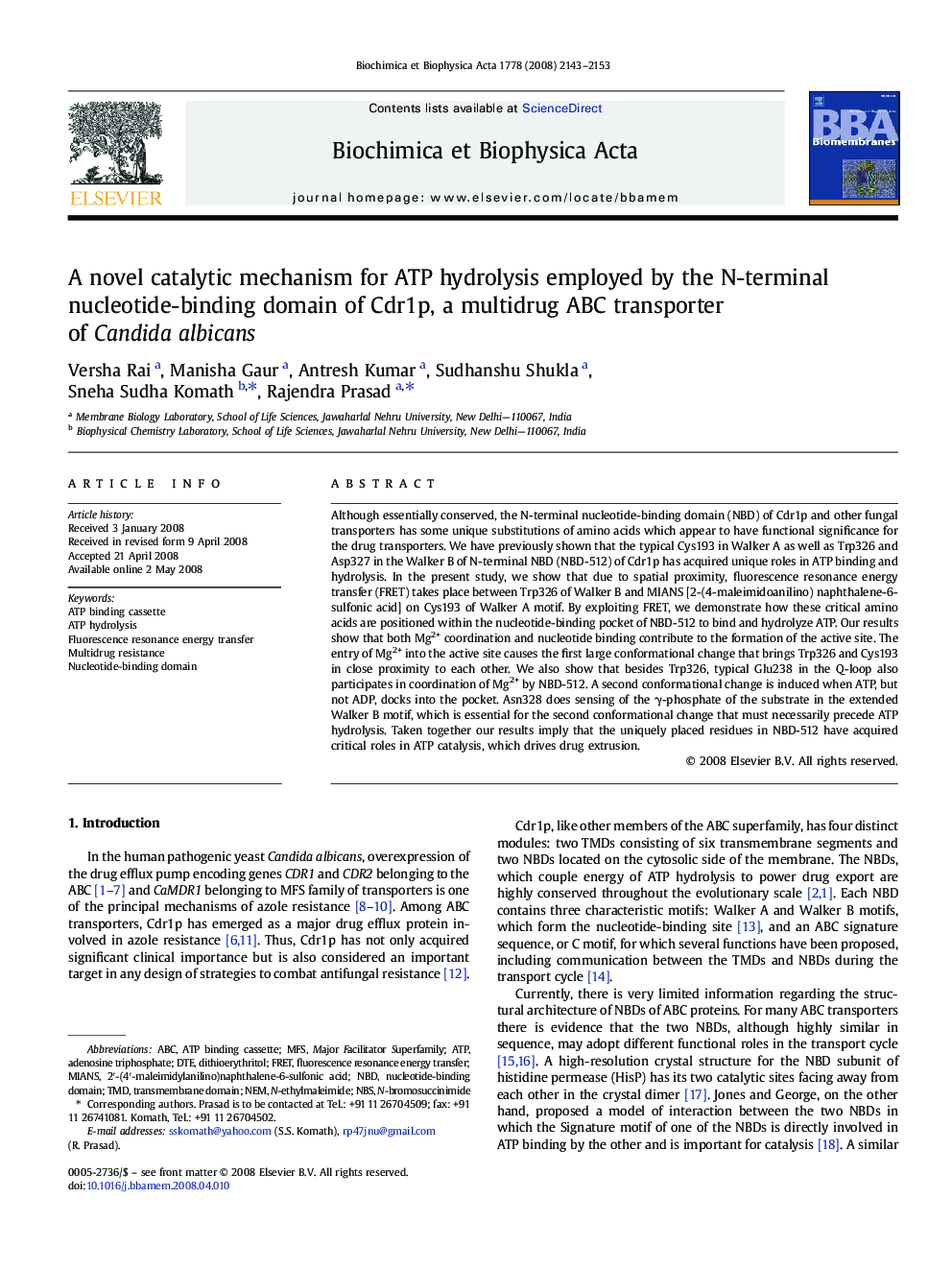| کد مقاله | کد نشریه | سال انتشار | مقاله انگلیسی | نسخه تمام متن |
|---|---|---|---|---|
| 1945451 | 1053265 | 2008 | 11 صفحه PDF | دانلود رایگان |

Although essentially conserved, the N-terminal nucleotide-binding domain (NBD) of Cdr1p and other fungal transporters has some unique substitutions of amino acids which appear to have functional significance for the drug transporters. We have previously shown that the typical Cys193 in Walker A as well as Trp326 and Asp327 in the Walker B of N-terminal NBD (NBD-512) of Cdr1p has acquired unique roles in ATP binding and hydrolysis. In the present study, we show that due to spatial proximity, fluorescence resonance energy transfer (FRET) takes place between Trp326 of Walker B and MIANS [2-(4-maleimidoanilino) naphthalene-6-sulfonic acid] on Cys193 of Walker A motif. By exploiting FRET, we demonstrate how these critical amino acids are positioned within the nucleotide-binding pocket of NBD-512 to bind and hydrolyze ATP. Our results show that both Mg2+ coordination and nucleotide binding contribute to the formation of the active site. The entry of Mg2+ into the active site causes the first large conformational change that brings Trp326 and Cys193 in close proximity to each other. We also show that besides Trp326, typical Glu238 in the Q-loop also participates in coordination of Mg2+ by NBD-512. A second conformational change is induced when ATP, but not ADP, docks into the pocket. Asn328 does sensing of the γ-phosphate of the substrate in the extended Walker B motif, which is essential for the second conformational change that must necessarily precede ATP hydrolysis. Taken together our results imply that the uniquely placed residues in NBD-512 have acquired critical roles in ATP catalysis, which drives drug extrusion.
Journal: Biochimica et Biophysica Acta (BBA) - Biomembranes - Volume 1778, Issue 10, October 2008, Pages 2143–2153